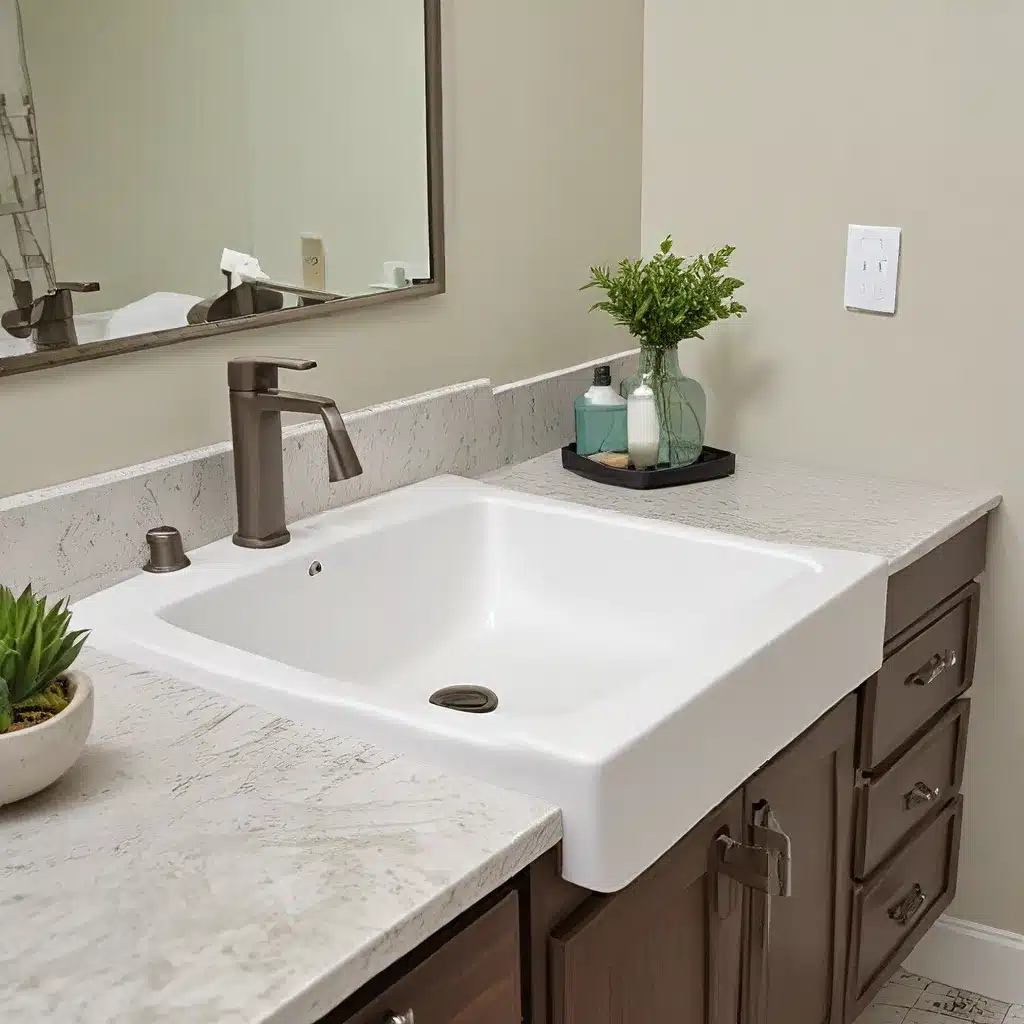
In a world where sustainability and eco-consciousness are top priorities, the humble washbasin or sink has become a crucial focal point for homeowners looking to reduce their environmental impact. As we strive to make our living spaces more green, the selection of a new sink or basin presents an opportunity to not only enhance the aesthetic appeal of our bathrooms but also contribute to a more sustainable household.
Embracing Eco-Friendly Sink Materials
When it comes to sustainable sink materials, there’s a wealth of options to consider. Gone are the days when the typical porcelain or ceramic basin reigned supreme. Today, homeowners and designers are exploring alternative materials that offer a lower environmental footprint without compromising on style or durability.
Recycled Glass has emerged as a popular choice, providing a unique and visually striking option. These sinks are crafted from repurposed glass bottles and jars, giving them a one-of-a-kind appearance that seamlessly blends form and function. Not only do recycled glass sinks reduce waste, but they also boast excellent resistance to stains and scratches, making them a durable choice for busy bathrooms.
Another sustainable material on the rise is Jadeite, a type of semi-precious stone that is both beautiful and eco-friendly. Jadeite sinks are not only visually stunning, but they also require minimal maintenance and can last for decades, reducing the need for frequent replacements and contributing to a more sustainable home.
For those seeking a natural and renewable option, Bamboo has emerged as a standout choice. Bamboo is a fast-growing grass that can be harvested sustainably, making it an excellent alternative to traditional wood. Bamboo sinks offer a warm, earthy aesthetic and are highly resistant to moisture, making them a practical and environmentally conscious selection.
Maximizing Water Conservation with Efficient Fixtures
Alongside the choice of sink material, the selection of water-efficient fixtures can have a significant impact on a home’s overall water consumption and environmental footprint. Low-flow faucets and showerheads are designed to deliver the same level of performance while using significantly less water, a crucial consideration in areas with limited water resources or during periods of drought.
Many manufacturers now offer Energy Star-rated fixtures, ensuring that they meet or exceed industry standards for water conservation. These fixtures can reduce water usage by up to 30% compared to traditional models, ultimately leading to cost savings on utility bills and a smaller environmental impact.
When it comes to toilets, choosing high-efficiency or dual-flush models can make a substantial difference in water consumption. These innovative designs use as little as 1.28 gallons per flush, a vast improvement over older models that can consume up to 3.5 gallons per flush.
Maximizing Water Recycling and Reuse
Beyond efficient fixtures, homeowners can take water conservation a step further by exploring greywater recycling systems. Greywater, the relatively clean wastewater generated from sinks, showers, and washing machines, can be redirected and reused for landscape irrigation or toilet flushing, reducing the overall demand on freshwater resources.
These systems, when properly installed and maintained, can divert thousands of gallons of water annually from the sewer system, making a significant impact on a home’s water footprint. While the initial investment may be higher, the long-term savings on water bills and the environmental benefits can make greywater systems a worthwhile consideration, especially in water-scarce regions.
Sustainable Sink Installation and Maintenance
When it comes to the installation and maintenance of sustainable sinks, homeowners and contractors alike must consider best practices to ensure the longevity and efficiency of these eco-friendly investments.
Proper sink installation is crucial, as improper fitting or sealing can lead to leaks and water waste. Experienced plumbers or DIY enthusiasts should follow manufacturer guidelines to ensure a secure and watertight connection, minimizing the risk of any unnecessary water loss.
Ongoing maintenance is also essential for sustainable sinks. Regular cleaning with non-toxic and biodegradable cleaning products can help preserve the sink’s appearance and functionality, while avoiding the use of harsh chemicals that can harm the environment. For stubborn stains or mineral buildup, eco-friendly limescale removers and scouring pads can be employed without compromising the sink’s integrity.
Embracing the Future of Sustainable Bathroom Design
As homeowners and designers continue to prioritize sustainability and environmental consciousness, the world of washbasins and sinks has evolved to meet these growing demands. From innovative materials to water-efficient fixtures and greywater recycling systems, the options for creating a greener bathroom have never been more abundant.
By making informed choices and investing in sustainable sink solutions, homeowners can not only enhance the aesthetic appeal of their bathrooms but also contribute to a more eco-friendly and resource-conscious household. As we strive to reduce our environmental impact, the humble sink has become a powerful tool in our quest for a more sustainable future.
Explore the wide range of sustainable sink options available at Washbasin Factory and discover how you can upgrade your bathroom while leaving a lighter footprint on the planet.

